Festivals Of India
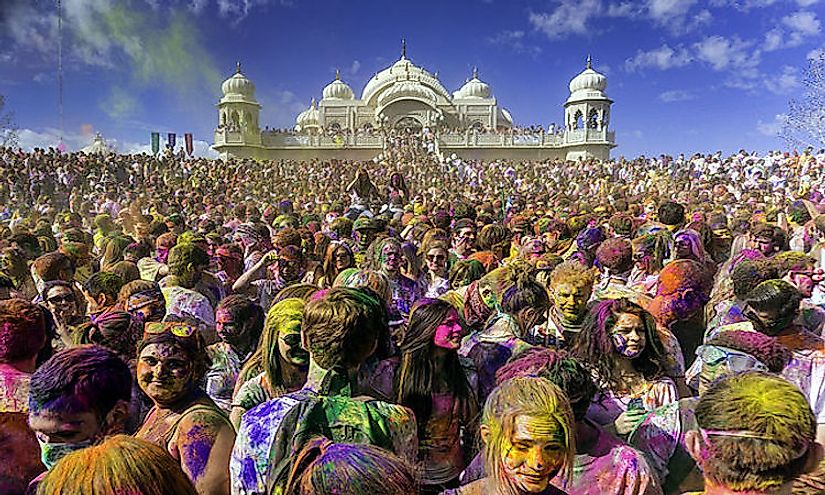
India is a secular country and one of the best examples of "Unity in Diversity" in the world. The country is famous for its rich ethnic and cultural diversity. India also celebrates a large number of festivals, many of which have a universal appeal. One festival or the other is celebrated almost in every month in the country. Another unique feature of the festivals of India is that people of all communities celebrate the festivals together. There are festivals specific to certain regions of the country, and there are others that are celebrated throughout the country. The use of vibrant colors often characterize the festivals of India. Traditional songs, music, and dances are an integral part of such festivities. Festivals in the country are times to socialize, visit families and friends, and also make friends with strangers and foes or fall in love. People from all walks of life appear to forget their problems during the festival days and instead immerse themselves in the fun and frolic associated with the celebrations.
With globalization, the festivals of India are now not geographically limited to the boundaries of the country but are enjoyed by people of many other countries. The Indian expat communities living in such countries have been responsible for popularizing the Indian festivals abroad.
Here we present some of the most popular festivals of India.
20. Holi -
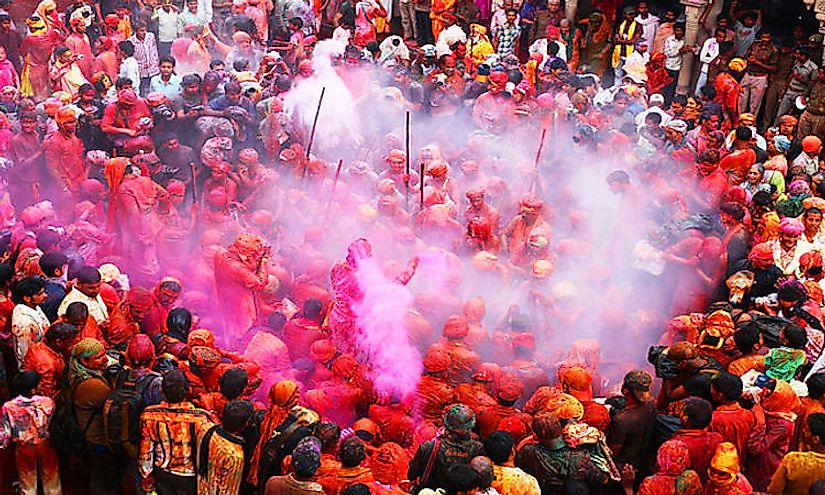
Where? Celebrated throughout India
When? Starts on the Full Moon day falling in the Bikram Sambat Hindu Calendar month of Falgun.
Gregorian Calendar: February or March
One of the most popular festivals of India- Holi is not only celebrated within the country but also in various other countries with a significant Hindu population. It is the festival of colors. During the festival, people smear each other with colored powder, play with colored water, use plastic guns or balloons filled with colored water and spray or throw them at others. Even strangers are not spared during this color fight which happens in the streets as well as terraces, and courtyards of homes. An intoxicating drink called bhang made from cannabis leaves is also drunk or mixed with sweets and consumed by many. People greet each other, have loads of fun and socialize.
19. Nag Panchami -
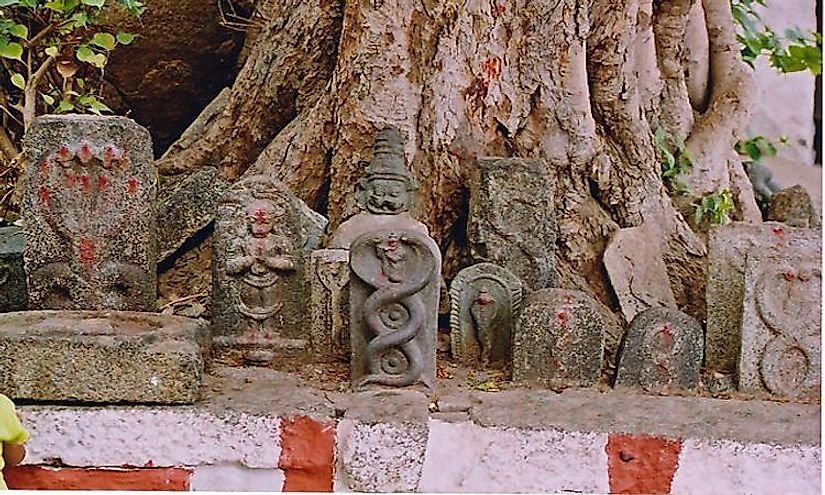
Where? Different parts of India
When? The first day of the bright half of Hindu Lunar month of Shravan.
Gregorian Calendar: July or August
Though venomous snakes are the objects of fear in many cultures across the world, the Hindus revere these snakes and worship them as the snake deity during the Nag Panchami. This one-of-a-kind festival involves rituals surrounding the worship of snakes in the form of paintings or stone, wood or silver sculptures. The snake idol is bathed in milk and offered food, flowers, and milk. During this festival, the Hindus seek the blessings of the Nagas (snakes) of the patal lok (the lowest of the seven realms of the universe that is located underground) for the welfare of their families.
18. Rath Yatra -
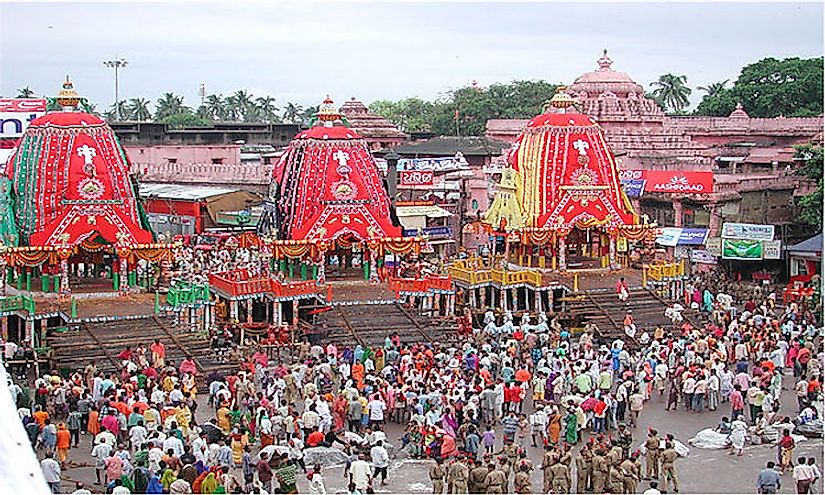
Where? Puri, Orissa, India
When? The second day of the shukla pakshya of the third month in the Lunar Calendar
Gregorian Calendar: June/July
The Ratha Yatra (Chariot Festival) held in Puri is the oldest (several centuries old), and most popular one among the Rath Yatra events held in other parts of India. This festival of India commemorates the annual visit of the Hindu God Jagannath from the Main Temple to the Gundicha Temple via the Mausi Maa Temple. The idols of the deities, Lord Jagannath, his younger sister Subhadra, and elder brother Balabhadra are placed on massive and richly decorated chariots which are modeled like Hindu temples. The chariots are then pulled by scores of people on the streets of Puri and carried from the Main Temple to the Gundicha Temple. Here, the deities stay for nine days after which they are returned to the Main Temple.
During this time tourists and pilgrims from all over India and the world visit Puri with the hope of lending a hand in pulling the Chariots of the Gods, considered to be an act of virtue by the Hindus. During this time, non-Hindus also get the chance to catch a glimpse of the Indian deities as they are not allowed to enter the inner core of the temple where these deities reside. The streets of Puri become the scene of a religious carnival during the Rath Yatra. Devotional songs are played, drums are beaten, and people of all ages crowd the streets to catch a glimpse of the procession.
17. Bihu -
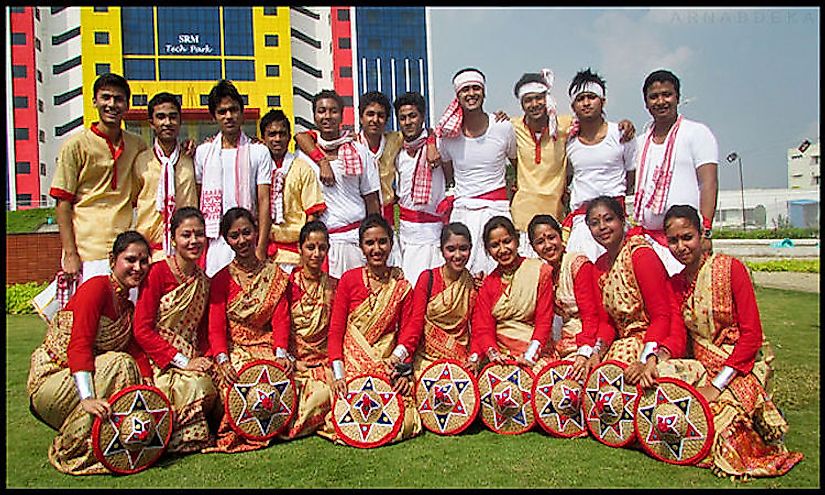
Where? Assam, India
When? Bohag Bihu in the middle of April, Kongali Bihu in October, Bhogali Bihu in January.
Bihu is a set of three cultural festivals held in Assam, India. The festivals are associated with farming. Folk songs and dances are held during the festival. The Bohag Bihu is the most popular among the three Bihu events and commemorates the beginning of the Assamese New Year. The farmers prepare their fields for crop planting during this time, and an atmosphere of merriment prevails in the air. People prepare traditional dishes and feasts in their homes. Cows are washed and worshiped. People wear new clothes and arrange social gatherings. Women also pray for fertility and young men and women participate in the famous Bihu dancing rituals.
16. Hornbill Festival -
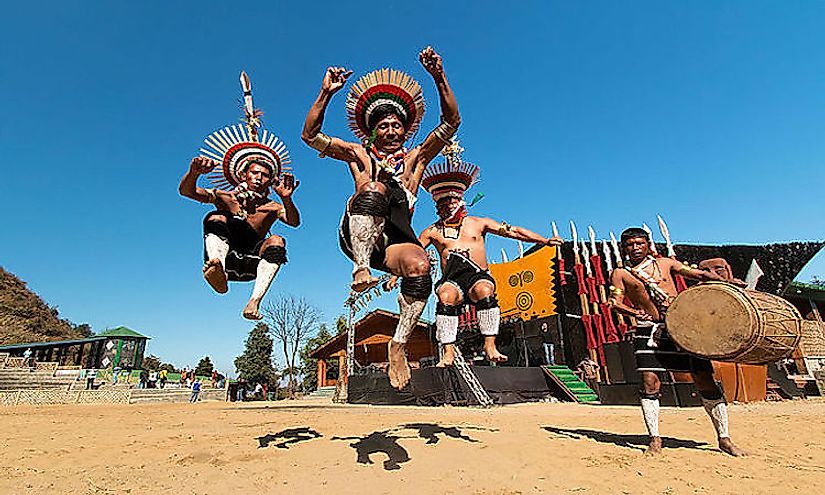
Where? Naga Heritage Village, Kisama, Nagaland, Northeast India
When? First Week Of December.
Nagaland in India is home to a large number of tribes with their distinct cultures and traditions. The Hornbill Festival, named after the colorful hornbill birds found in the region, is an amalgamation of these tribal cultures in one common ground. It is a government recognized festival of India that promotes inter-tribal interactions and presents the unique culture of Nagaland to the world.
Visitors arrive from different parts of the globe to attend the Hornbill Festival and enjoy the week-long festivities including tribal songs and dances, tribal cuisine, Naga wrestling, traditional archery, indigenous games, flower shows, and more. The interesting and unique handicrafts of the region are exhibited and sold during this time. The Hornbill International Rock Festival is also held during this time adding glamor to this tribal festival.
15. Ganesh Chaturthi -
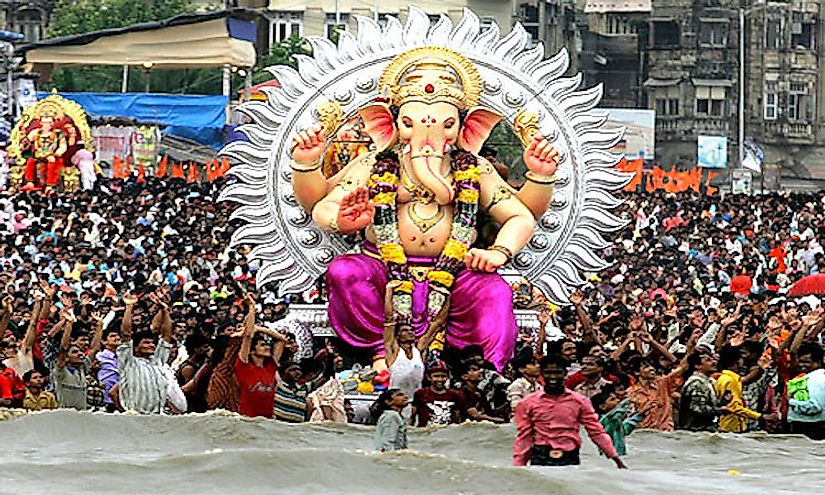
Where? Chiefly, Maharashtra and Andhra Pradesh
When? The fourth day of the first fortnight in the Bhadrapada month of the Hindu lunisolar calendar.
Gregorian Calendar: August or September
The Ganesh Chaturthi celebrates the birthday of the Hindu God, Ganesha who is considered to be the God of prosperity and a new beginning. During this festival of India, handcrafted idols of Ganesha, ranging from small ones in homes to larger-than-life sized idols in outdoor pandals are worshiped for ten days. The last day witnesses the immersion of the idol in a nearby waterbody. The immersion processions pour out into the streets of the city where loud music is played, and people sing and dance throughout the procession.
14. Raksha Bandhan -
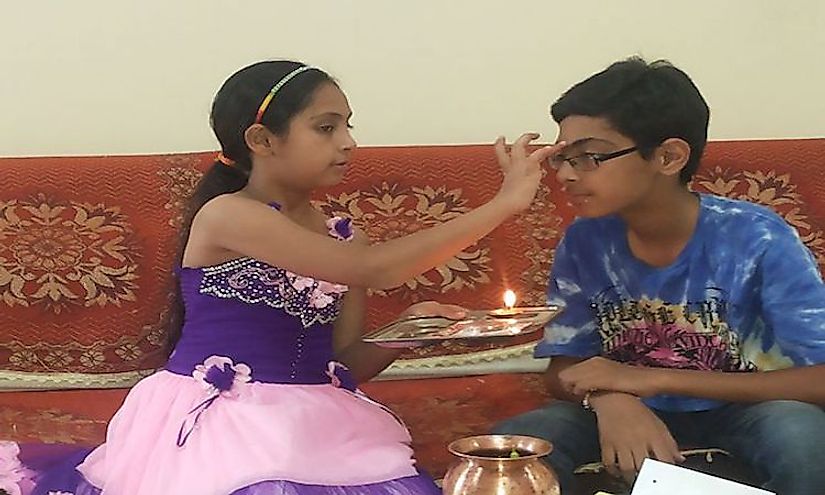
Where? Particularly in the central, western, and northern parts of the country)
When? The full moon day of the Shravana month of the Hindu lunisolar calendar.
Gregorian Calendar: August
A festival that celebrates the loving bond between the brother and the sister, Raksha Bandhan (the bond of protection) is definitely the only one of its kind in the world. Here, the sister ties a sacred thread to her brother’s wrist and wishes him good luck. The brother, in turn, vows to protect his well-wishing sister from all harm.
Raksha Bandhan had immense significance in the history of India. There are tales describing how a Hindu queen tied the sacred thread on the wrist of a Muslim Mughal ruler, bringing him into a bondage of love and protection so that he would not destroy or invade her kingdom. Thus, Raksha Bandhan of the past and present also celebrates brother-sister relationships that are not essentially biological in nature.
13. Poush Mela -
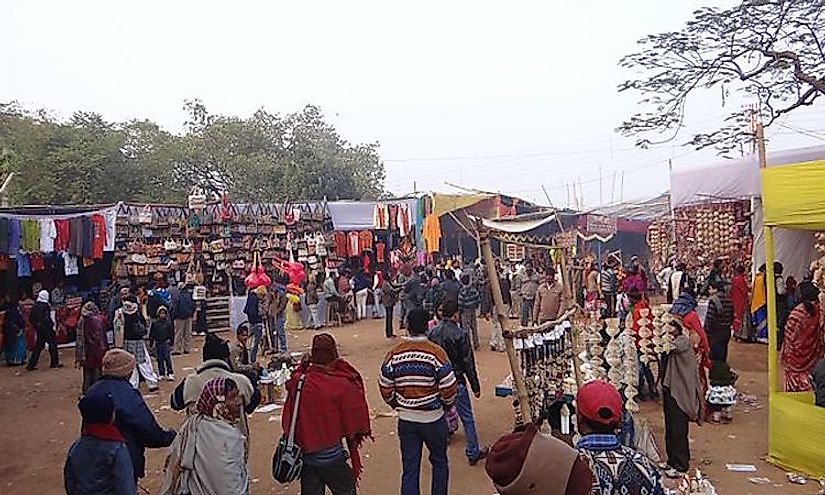
Where? Santiniketan, West Bengal, India
When? The seventh day of the month of Poush
Gregorian Calendar: December
Poush Mela is an annual fair held in Santiniketan for a period of 3 days. However, vendors might also stay longer. The main attractions of this festival include performances by Bengal’s folk singers. Baul music performances are must-see events at this festival. Handicrafts made in the villages of Bengal are sold at the fair. Visitors to Poush Mela also visit the Viswa Bharati, the famous university established by the Nobel laureate, Rabindranath Tagore.
12. Vaisakhi -
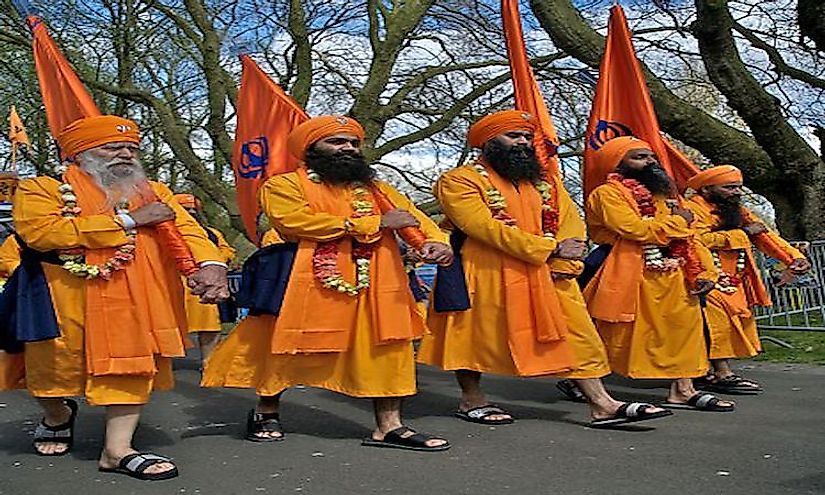
Where? Biggest celebration in Punjab, India
When? The first day of Vaisakh (the first solar month of the Punjabi calendar)
Gregorian Calendar: April
Vaisakhi is the harvest festival of India that is celebrated in the Punjab region of the country and is also commemorated as the Punjabi New Year. Fairs are organized in villages across Punjab. In the farmers’ fields, people work together harvesting wheat and at the day’s end sing and dance to the tunes of the drum. The folk dance of the region, bhangra, is also performed by the Punjabis. Vaisakhi is a festival of India that is significant to both the Hindus and Sikhs of the region and is celebrated by people of both the religions. Sikh devotees attend the Gurudwara during this festival.
11. Dussehra -
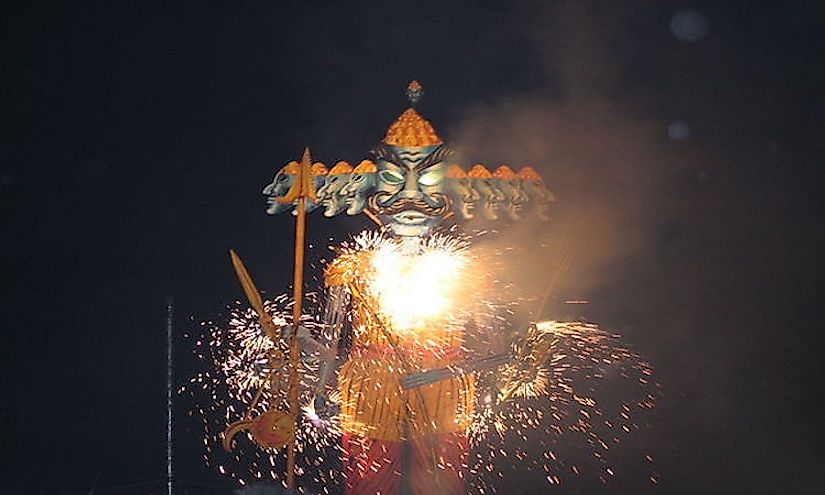
Where? Throughout India
When? The tenth day of the Ashwin month of the Hindu lunisolar calendar.
Gregorian Calendar: September/October
Dussehra is a unique festival of the Hindus that, like many other Hindu festivals, celebrates the victory of good over bad. The festival is closely related to the Hindu epic of the Ramayana and celebrates the death of the evil King Ravana at the hands of Lord Rama. During this 10-day festival, Ramlila, the story of Rama is enacted by local actors at various religious congregations. The festival is ended by burning “larger than life” effigies of Ravana, symbolizing the end of evil.
10. Pushkar Camel Festival -
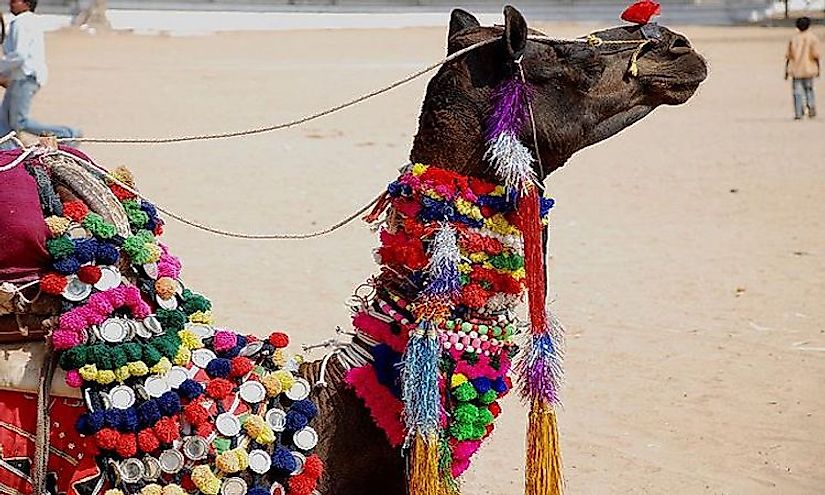
Where? Pushkar, Rajasthan, India
When? Kartik ekadashi to Kartik Poornima
Gregorian Calendar: October or November
The Pushkar Camel Festival is a popular event in India. It was traditionally a livestock fair where camels and other livestock were bought and sold. Today, this five-day fair, held in the desert state of India, is associated with a number of other activities like bridal and mustache competitions. One of the newest additions is a cricket match that is held between the locals of Pushkar and foreigners visiting Pushkar. Stalls sell local handicrafts and local jewelry. The fair starts off with a camel race and also involves musical events.
9. Krishna Janmashtami -
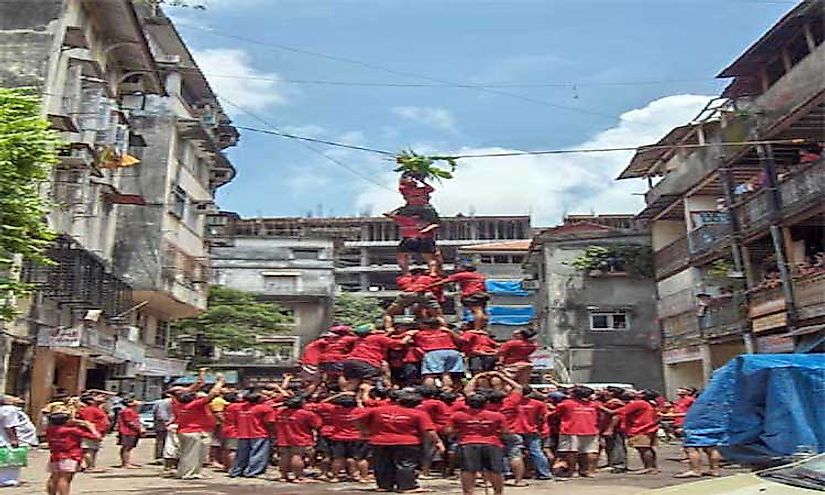
Where? All over India but the celebrations at Mathura and Vrindavan are most popular.
When? The 8th day of the Krishna Paksha of the Bhadrapad month of the Hindu lunisolar calendar.
Gregorian Calendar: August/September
This Hindu festival of India celebrates the birth of Lord Krishna. It is a vibrant and spectacular event where people sing and dance, prepare traditional dishes, decorate homes, visit temples, and dramatic enactments on the life of Lord Krishna are held. One of the main attractions of the festival involves the breaking of the Dahi Handi, an earthen pot full of curd hung high above the ground. Teams of men make human towers with the one at the top trying to break the pot and spill the curd. The successful team is showered with praises and gifts. This event celebrates the mischievous nature of Lord Krishna who in his childhood would steal dairy products from neighboring homes with his playmates and then consume the same.
8. Hemis Festival -
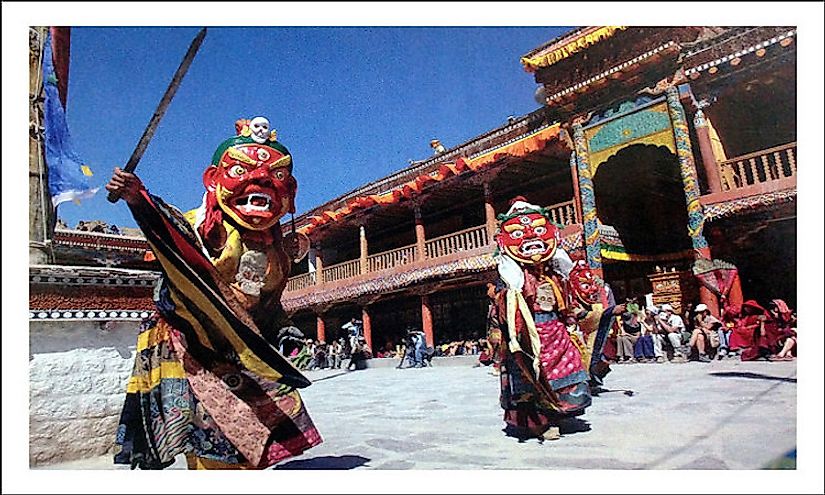
Where? Hemis Gompa or Hemis Monastery located in Hemis, Ladakh, India (45 km from Leh)
When? The tength day of the Tibetan lunar month.
Gregorian Calendar:
The two-day Hemis Festival is celebrated in a Buddhist monastery in Ladakh. The festival celebrates the birth of Padmasambhava, the founder of Tibetan Buddhism. Local men and women gather at the monastery during this festival, geared up in vibrant traditional clothing and headgears. Women wear loads of handcrafted jewelry. The Lamas of the monastery perform the sacred mask dance, a unique cultural performance that is popular among tourists.
7. Navratri -
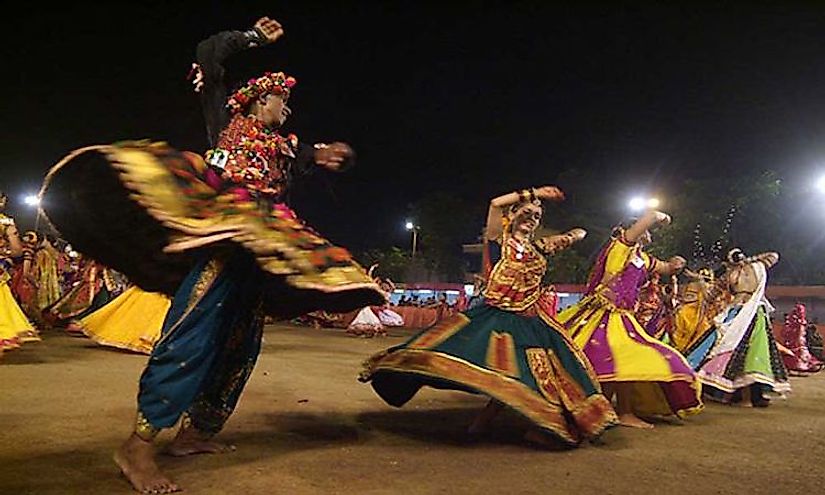
Where? Throughout India, best celebrations in Gujarat, Maharashtra and some of the metro cities of India.
When? The first nine days of the month of Ashwin, overlapping with the period of Dussehra celebrations.
Gregorian Calendar: September/October
The Navratri celebrations involve traditional dance, songs, feasts, and other festivities. The Hindu Goddess Amba is worshiped during this nine-day long festival. The most attractive feature is the Dandiya Raas dances and the Garba nights. Everyone is allowed to participate in these traditional dances and people aggregate in masses at pre-determined venues dressed in vibrant traditional clothing to dance together. Mouthwatering dishes are prepared and served to all at such venues. The Navratri festival of India has also gained huge popularity abroad and involves people of other faiths and countries in the festivities.
6. Onam -
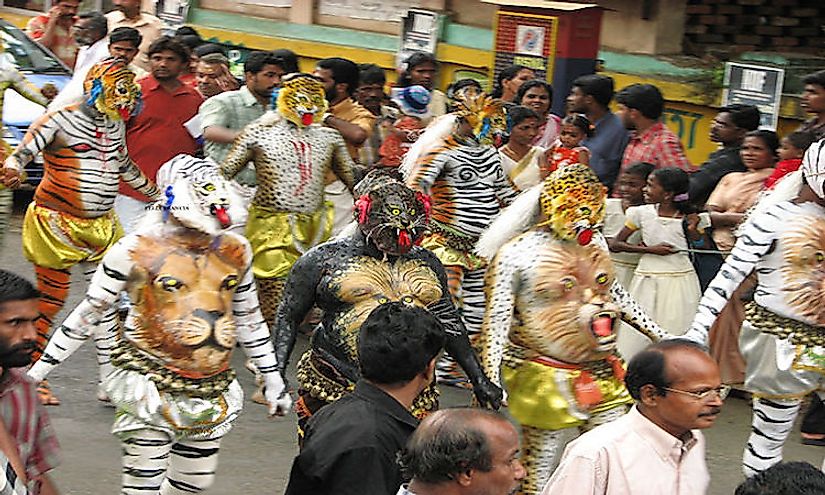
Where? Kerala, India
When? Onam Eve to the third Onam Day
Gregorian Calendar: August/September
Onam, the state festival of Kerala is celebrated with great pomp and glory in this South Indian state for ten days. It is a harvest festival celebrated by Keralians from all walks of life. It is a Hindu festival of India which celebrates the homecoming of King Mahabali. People worship Vamana, the fifth avatar of the Hindu Lord Vishnu during this festival. A number of cultural events and rituals are held during this time. The people of Kerala clean and brighten their homes prior to Onam. They shop for new clothes and home decor. Various functions are held where traditional dances and music are performed. People enjoy feasts with their family Several Onam-related competitions like the snake boat race are held during this period. People visit the temples and prepare traditional dishes at home.
5. Christmas -
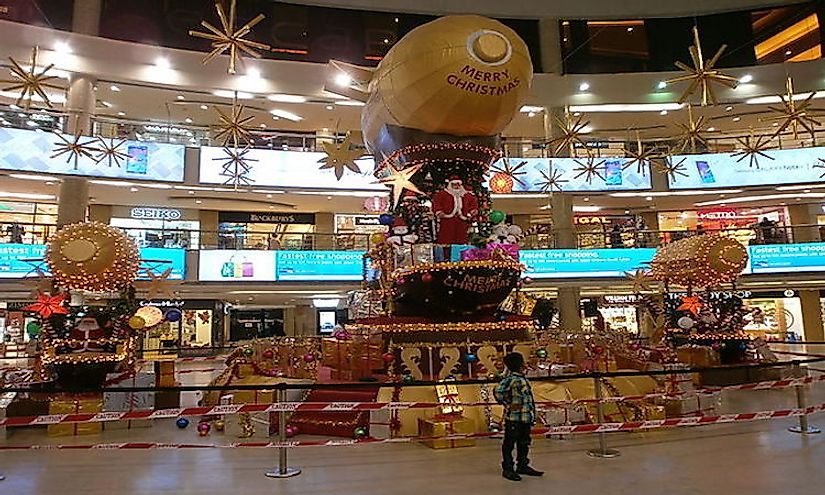
Where? Best celebrations can be attended in Goa, Pondicherry, and Kerala
When? December 25
Just like the Hindu and Muslim festivals of India, the Christian festival of Christmas is also celebrated with great enthusiasm countrywide by the Christian community of the country. However, Christmas celebrations are not limited to this religious community in the country and Indians of other religions also participate in Christmas festivities by attending churches, decorating homes, and exchanging gifts with each other. The best Christmas celebrations in India happen in the Indian states of Kerala, Goa, and the Union Territory of Pondicherry. These regions have a significant Christian community and are also tourist hotspots of India.
4. Eid ul-Fitr -
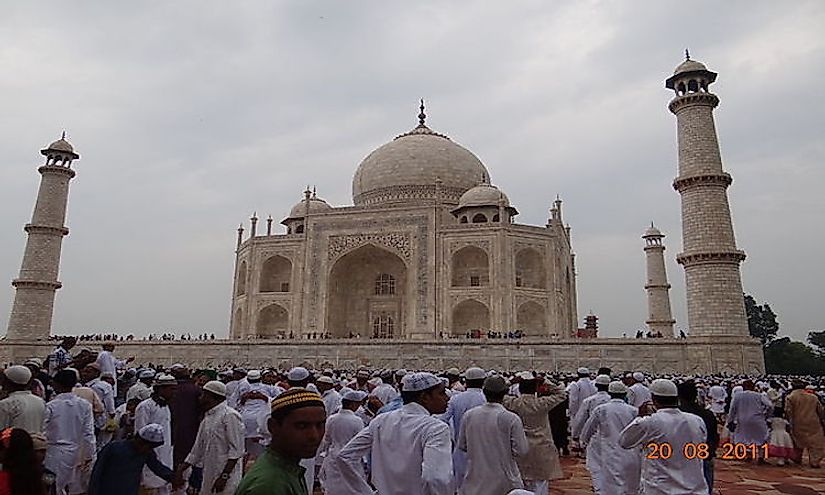
Where? Celebrated by Muslims throughout India
When? On the first day of the month of Shawwal of the lunar Hijri calendar
Gregorian Calendar: Variable months and days.
Unity in diversity is one of the features that define India. Eid ul-Fitr, a Muslim celebration, is declared as a national holiday in the country. During this festival, Muslims dress up in new clothes, visit the mosques for prayer, make traditional dishes at home, and visit the homes of family and friends.
3. Maha Kumbh Mela -
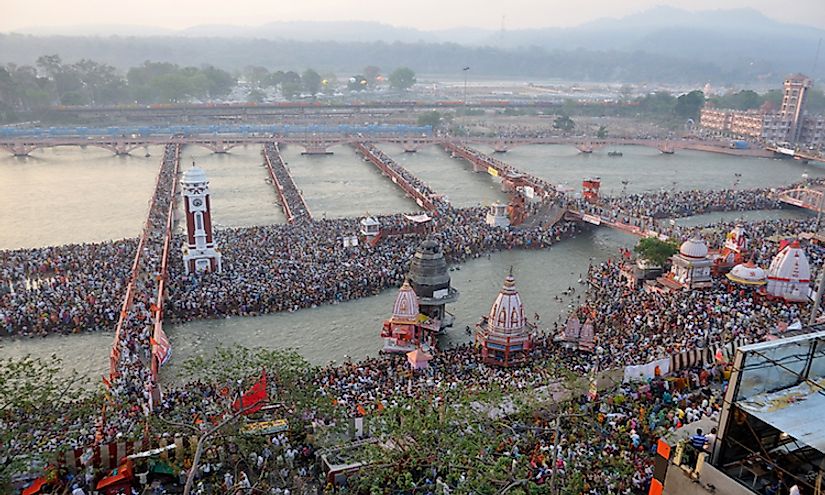
Where? Haridwar, Allahabad (Prayaga), Nashik District and Ujjain on a rotational basis.
When? After every 12 years. Next one is in 2022.
Considered to be the largest peaceful religious gathering on Earth, the Maha Kumbh Mela witnesses the gathering of millions of Hindus on the banks of the holy rivers for the purpose of taking a ritual bath in the holy waters. Pilgrims also seek blessings of the saints and sadhus who visit the venue during this time. Many days prior to the Kumbh Mela, the government starts to make preparations, arranging tents, health services, and security for the millions of pilgrims who would arrive at the venue during the Maha Kumbh Mela. It is a scene like no other. Media persons from across the world as well as a large number of tourists, also visit the Maha Kumbh Mela to observe the spectacle with their own eyes.
2. Diwali -
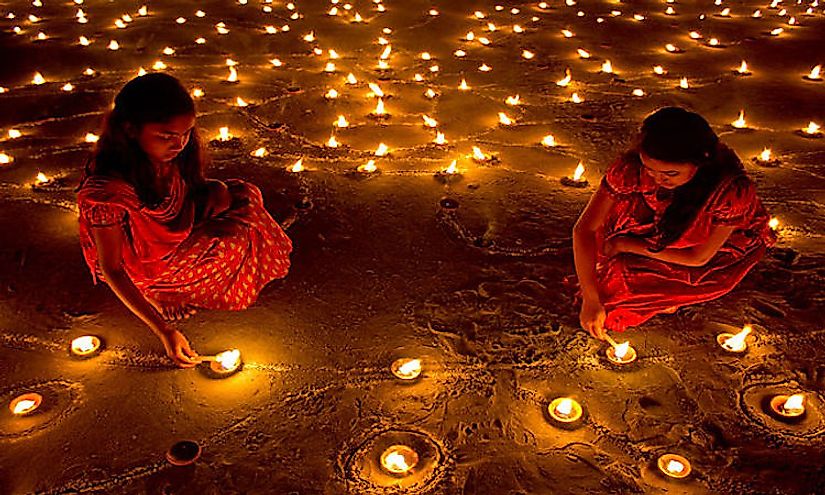
Where? All over India
When? The Kartik month's darkest new moon as per the Hindu lunisolar calendar
Gregorian Calendar: Mid-October to mid-November
Diwali is one of the most popular Hindu festivals of India. It is also known as the “festival of lights.” A number of mythological tales explain the origin of this festival, and it symbolizes the victory of good over evil. During Diwali, people decorate their homes with clay lamps and candles. The Goddess Laxmi is worshiped in homes, people wear new clothes, burst crackers, and distribute sweets among neighbors, friends, and families.
1. Durga Puja -
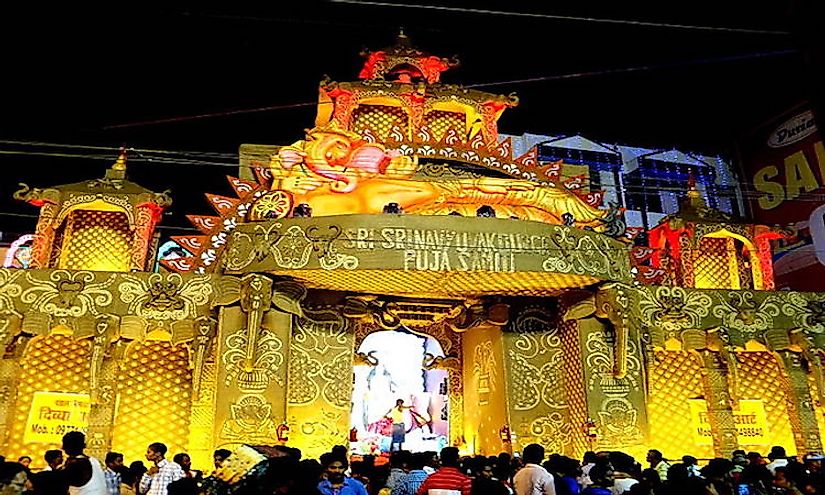
Where? The best celebrations can be observed in Kolkata, West Bengal, India
When? Sixth to the tenth day of Ashwin shukla paksha.
Gregorian Calendar: September/October
Durga Puja, a festival like no other in the world, witnesses four-day long festivities in the streets and homes of the city of Kolkata and elsewhere in the country. The Hindu festival of India celebrates the victory of good over evil- the death of the Mahisasura demon by Goddess Durga. The Goddess is worshiped through these four days along with her two sons and two daughters who are also important figures of Hindu mythology and worship.
During the Durga Puja, the streets of Kolkata undergo a magical makeover. Pandals decorated on a variety of themes ranging from global warming to Egyptian lands are set up by local artists and innovative idols of the Goddess and her children magnify the beauty of the pandals. The streets of Kolkata are crowded throughout the day and night as people wait in long queues to catch a glimpse of the unique pandals and idols. New clothes are worn by all and feasts are enjoyed almost every day. On the last day of the festival, married women engage in sindur khela where they smear each other with vermillion, a sign of a happily married life. After the clay idols are immersed in the local water bodies or rivers, people visit the homes of their relatives and friends, sweets in hand, and wish each other good fortune and a happy life. A large number of tourists visit Kolkata during the Durga Puja festival to enjoy the spectacular scene and the festive mood.







